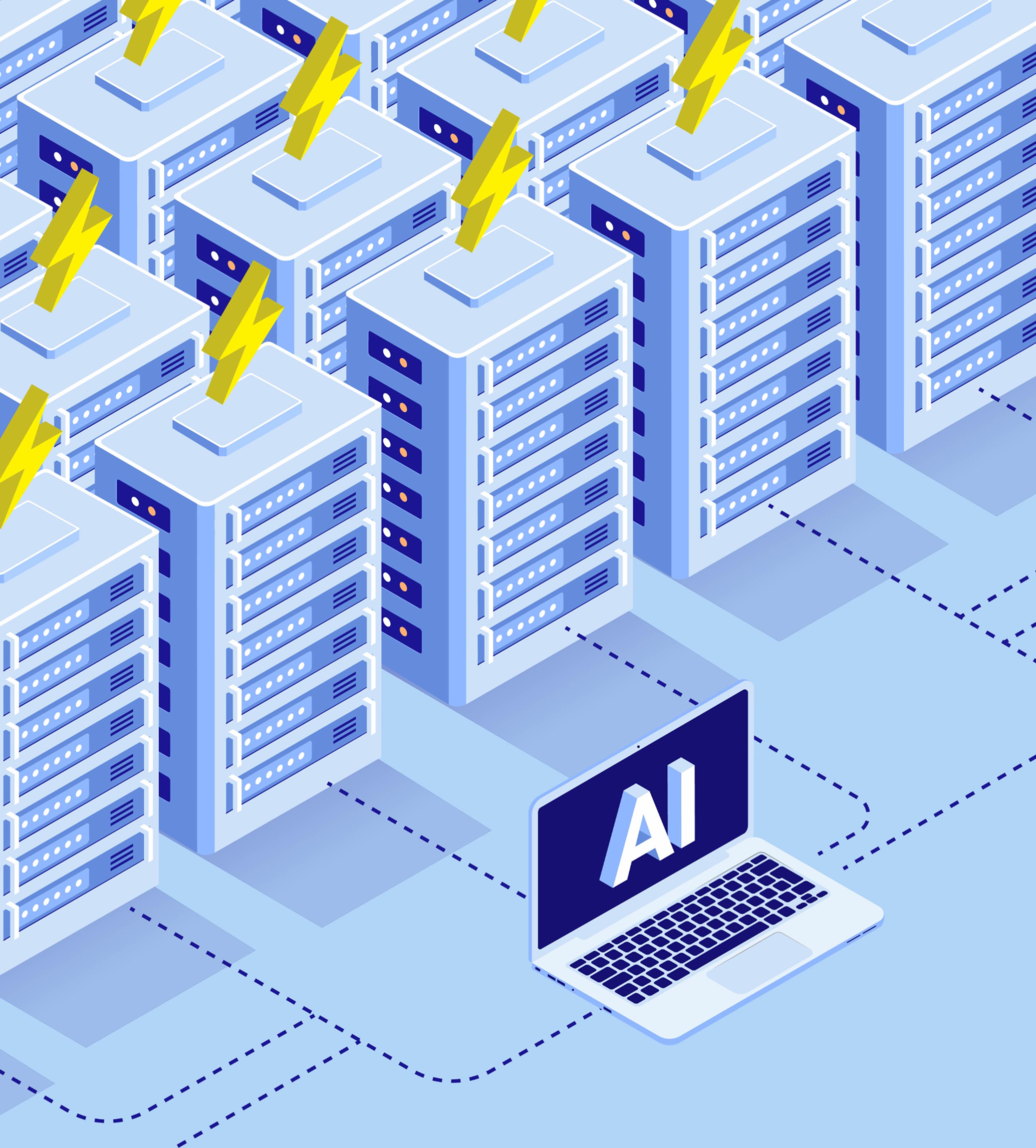Our planet is paying for AI

I am not an AI expert. Nor am I an environmental expert. But I have read enough to know that alongside all the wonderful things AI can and will do, lie consequences for our planet that are ignored at our peril.
What follows is a summary of what I have gleaned from several sources, as well as some direct quotes from people way more knowledgeable about the topic than I am. I have included my references at the end of the blog, so you can learn more if you choose.
AI and the Environment
There is no question that AI can have a positive impact on the environment. In Japan, AI-powered drones are helping pinpoint the optimal locations for planting seeds, allowing trees to grow as much as 10 times quicker than using traditional methods for reforestation. AI can also be used to monitor the environment, helping guide decision-makers in choosing options that are good for the planet.
However, the long-term environmental impact of AI is a real concern. We have a history of pursuing innovation before understanding its consequences, as Nishtha Baral of Republica explains:
“In our haste to embrace the technological advancements of artificial intelligence, we risk falling into a familiar and dangerous cycle — one where health and environmental consequences are considered only after significant damage is done. What begins as progress often leaves behind a trail of consequences, recognized only when it’s too late. From mechanical simplicity to e-waste complexity, from the rise of cars to the eventual ban on leaded gasoline, history reminds us time and again: innovation outpaces our understanding of long-term impacts.”
The environmental costs
AI’s negative impact on the environment is multi-faceted and encompasses energy demands, water consumption, materials acquisition, and electronic waste.
Energy demands
The data centers that fuel AI consume massive amounts of energy, and the majority of that energy comes from burning fossil fuels, the biggest contributor to global warming. The training of deep learning models like ChatGPT in data centers may use “seven to eight times more energy than a typical computing workload,” according to Noman Bashir, Computing and Climate Impact Fellow at MIT Climate and Sustainability Consortium. In a 2021 research paper, scientists from the University of California at Berkeley and Google estimated the training process of OpenAI’s GPT-3 consumed 1,287 megawatt hours of electricity — enough to power about 120 average U.S. homes for a year.
And since the energy demands fluctuate significantly during the training process, the operators of local power grids — in an attempt to protect those grids — often use diesel-based generators, which emit pollutants that can cause serious health problems, to absorb the changes in demand.
Exacerbating the energy demands is the fact that generative AI models are short-lived. With the increasing demand for new AI applications, new models are released every few weeks, essentially negating all the energy used to train prior versions. The new models frequently consume even more energy for training to accommodate the increased number of parameters incorporated into the updated version.
Once the model is trained, the consumption continues. Whenever a query is made of the model, the computing hardware uses more energy. Researchers have estimated that a ChatGPT inquiry consumes anywhere from four to 10 times more electricity than a simple web search.
While generative AI is not the only computing done by data centers, it has contributed significantly to the increase in energy demands by those centers. According to MIT News, the consumption of electricity by data centers is expected to reach 1,050 terawatt-hours by 2026, which would place data centers fifth among nations — between Japan and Russia — in terms of electricity usage. In more relatable terms, a data center uses 10,000 times more energy than an average U.S. home. With the power grid already strained in many areas and the concentration of data centers in places where marginalized people live, the increasing energy demands of AI will have dire consequences if not addressed.
Water consumption
AI’s water demands are equally concerning. The cooling systems for AI servers use a staggering amount of water to absorb the heat generated by the computing equipment, which can strain municipal water supplies and disrupt local ecosystems. According to one estimate, AI infrastructure may soon use six times more water than Denmark, which has a population of 6 million. As noted by the United Nations Environment Programme, “That is a problem when a quarter of humanity already lacks access to clean water and sanitation.”
Materials and waste
The computing hardware used in generative AI applications creates additional environmental consequences, although they are more indirect. Obtaining the raw materials for the manufacturing of graphics processing units (GPUs) often involves dirty mining procedures and the use of toxic chemicals for processing. The carbon footprint of GPUs is further compounded by the emissions generated by transporting the materials and products.
Furthermore, data centers create electronic waste (e-waste) when hardware breaks or becomes obsolete and is discarded. If not properly disposed of and recycled, e-waste poses a threat to health and the environment because it frequently contains dangerous materials, including dioxins, lead, and mercury.
What is being done
The AI genie is already out of the bottle, but environmental concerns are being raised around the globe. Over 190 countries have adopted non-binding recommendations on the ethical use of AI, which include its environmental impact. Additionally, both the United States and the European Union have introduced legislation to mitigate the effects of AI on the environment.
Companies like Google and Microsoft are pushing for carbon-neutral operations and are looking at nuclear power as an option. Others are calling for a transition to using renewable energy sources, such as solar and wind, and adopting more energy-efficient processes to help mitigate the environmental impact.
Your impact
Every time you use ChatGPT or a similar tool, there are environmental consequences. When trying to be more efficient by using AI, you are also contributing to its negative impact. The next time you consider using AI to write a simple email or summarize a meeting, ask yourself whether the benefits are worth the cost. Remember, there is no Planet B.
If you want to take a small step toward reducing your AI consumption, you can add “-noai” at the end of your Google search input to remove the automated AI summary the company added to its search results.
Note: No AI was used in the creation of this blog. Any mistakes or misinterpretations are all my own.
References and further reading:
- Can We Mitigate AI’s Environmental Impacts?
- Explained: Generative AI’s environmental impact
- AI has an environmental problem. Here’s what the world can do about that.
- The AI Revolution Isn’t Possible Without an Energy Revolution
- Generative AI’s environmental costs are soaring — and mostly secret
- ChatGPT Is Everywhere — Why Aren’t We Talking About Its Environmental Costs?
- AI’s Dirty Secret: Racing Toward an E-Waste Crisis
- Japan’s Drones and AI Are Revolutionizing Forest Restoration Worldwide
- Electronic waste (e-waste)



